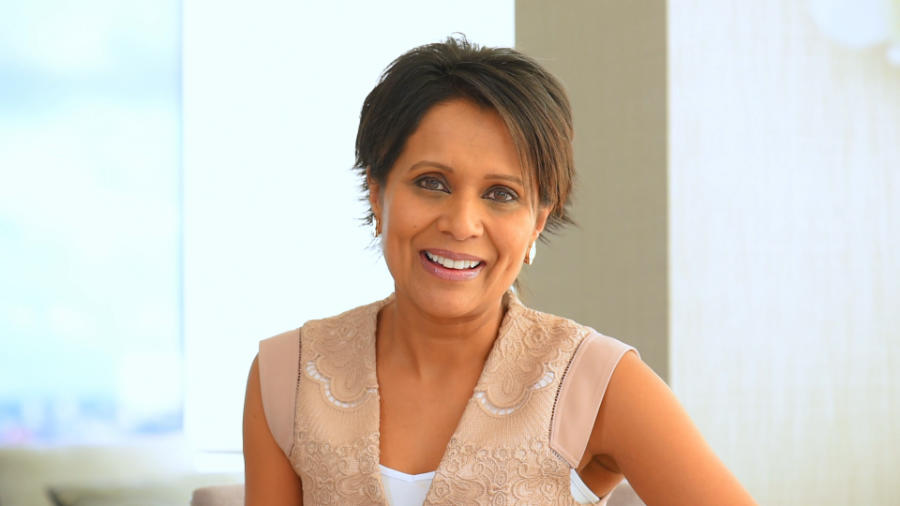Effective Communication and Conflict Resolution: A Step-by-Step Guide

Whether in a personal and professional environments, the art of effective communication and conflict resolution plays a pivotal role in fostering harmonious relationships and achieving collaborative success.
This guide is meticulously crafted to navigate you through the intricate dynamics of conflict, employing strategies such as active listening, clear expression, negotiation, and the establishment of healthy boundaries. As we explore this topic, you will discover not only the theoretical underpinnings but also practical steps to transform conflict into a constructive dialogue.
The question then arises, how can one master these techniques to not only resolve disputes but also to prevent them from escalating? Join us as we explore this crucial skill set further.
Key Takeaways
- Active listening, including eye contact and reflective summarizing, is crucial for effective communication and conflict resolution.
- Understanding and expressing emotions clearly, alongside empathetic engagement, enhances mutual understanding in conflicts.
- Establishing and respecting healthy boundaries is fundamental for maintaining effective communication and resolving disputes.
- Employing win-win negotiation strategies and maintaining ethical standards ensures fair and sustainable conflict resolutions.
Understanding Conflict Dynamics
One must recognize that at the heart of every conflict lies a complex interplay of emotions, perceptions, and interests, necessitating a thorough understanding of these dynamics to navigate disputes effectively. Conflict origins often stem from misunderstandings, unmet needs, or perceived threats to one’s interests or values. These situations are further complicated by emotional responses that can cloud judgment and escalate tensions. Understanding these emotional underpinnings is crucial for devising effective resolution strategies.
Escalation triggers, such as harsh language or dismissive behavior, can intensify conflicts, making them harder to resolve. Recognizing these triggers and addressing them early is key to preventing disputes from spiraling out of control. Moreover, power imbalances can exacerbate conflicts, with parties feeling either overpowered or undervalued, leading to resentment and further misunderstanding.
To navigate these complexities, one must employ resolution strategies that acknowledge and address the emotional aspects of conflicts, seek to understand the underlying interests of all parties, and aim to rebalance power dynamics. This empathetic and analytical approach can pave the way for more constructive dialogue and sustainable solutions, empowering all parties to regain control over the situation.
Active Listening Techniques
To effectively navigate and resolve conflicts, mastering the art of active listening is indispensable, as it fosters an environment of understanding and empathy. Active listening is not just about hearing the words that are spoken but also about understanding the emotions and intentions behind those words. It requires full concentration, understanding, responding, and then remembering what is being said. Here are some techniques to enhance active listening skills:
| Technique | Description |
|---|---|
| Eye Contact | Maintain direct eye contact to show engagement and interest. |
| Open Posture | Adopt a posture that is open and welcoming, not closed-off or defensive. |
| Reflective Summarizing | Paraphrase and summarize what the speaker has said to ensure understanding. |
| Emotion Recognition | Pay attention to the speaker’s emotions and acknowledge them. |
| Question Asking | Ask clarifying questions to ensure complete comprehension of the message. |
Engaging in active listening not only aids in conflict resolution but also strengthens relationships by showing respect and care for the perspectives of others. By incorporating these techniques, individuals can navigate challenging conversations with greater ease and effectiveness, leading to more meaningful and productive outcomes.
Expressing Yourself Clearly
While mastering active listening is crucial for understanding others in conflicts, equally important is the ability to express oneself clearly and effectively to ensure one’s own thoughts and feelings are comprehended. Achieving this level of clarity in communication is not solely about the words chosen but also involves mindful control of body language, tone modulation, and emotional intelligence. These elements work harmoniously to convey messages in a way that is both respectful and transparent.
Body language plays a significant role in expressing sincerity and openness, while appropriate tone modulation can help prevent misunderstandings that might escalate the conflict. It’s essential to establish clear objectives before entering a discussion to keep conversations focused and productive. This preparation allows for the establishment of feedback loops, where both parties feel heard and understood, and where clarifications can be made in real-time.
An empathetic approach, underscored by high emotional intelligence, enables individuals to navigate the emotional landscapes of themselves and others carefully. By understanding and managing one’s emotions, one can prevent the conversation from veering into emotional reactivity, thus maintaining a calm and constructive dialogue. This balance of analytical thinking, empathy, and clear expression forms the foundation of effective conflict resolution.
Negotiation and Compromise
Effective conflict resolution often hinges on the parties’ ability to engage in constructive negotiation and find mutually acceptable compromises. This process requires a profound understanding of win-win strategies, where solutions benefit all involved rather than serving the interests of one party at the expense of another. To achieve such outcomes, individuals must employ effective interpersonal tactics, fostering an environment where open and honest communication is paramount.
Emotional intelligence plays a crucial role in this context, enabling participants to recognize and manage not only their emotions but also those of the other party. This awareness fosters empathy and understanding, essential components for reaching an agreement that respects the needs and desires of everyone involved.
Furthermore, maintaining a power balance is critical. Negotiation ethics dictate that no party should feel coerced or unduly pressured into agreement. This ethical stance ensures that the negotiation process is fair and equitable, paving the way for sustainable resolutions that can withstand the test of time. By adhering to these principles, parties can navigate the complexities of conflict with dignity, respect, and a genuine commitment to finding a resolution that honors the interests of all involved.
Maintaining Healthy Boundaries
Establishing and respecting healthy boundaries is paramount in preventing conflicts and enhancing mutual understanding in any relationship. Cultivating a culture of clear, compassionate boundary setting and respect enforcement is essential for healthy interpersonal dynamics. This process begins with self-awareness, acknowledging one’s personal limits, and understanding the importance of emotional intelligence in relationships.
Here are key components to maintaining healthy boundaries:
- Self-awareness importance: Recognize and understand your own needs, feelings, and limits.
- Boundary setting: Clearly communicate your needs and limits to others.
- Emotional intelligence: Cultivate the ability to perceive, control, and evaluate emotions, both in yourself and in others.
- Respect enforcement: Consistently uphold your boundaries and respect those set by others.
- Personal limits: Acknowledge and accept that everyone has their own set of boundaries that need to be respected.
Frequently Asked Questions
How Does Cultural Background Influence Conflict Resolution Styles and Communication Preferences?
Cultural background significantly impacts conflict resolution styles and communication preferences through various dimensions. Cultural norms dictate acceptable behaviors in resolving disputes, while language barriers can complicate understanding and negotiation. Tradition influences shape individuals’ approaches to conflict, emphasizing either confrontational or conciliatory tactics.
Nonverbal cues and social contexts further modify communication, as gestures and societal expectations vary widely across cultures. Recognizing and adapting to these factors is crucial for effective conflict resolution and communication.
What Role Does Emotional Intelligence Play in the Effectiveness of Conflict Resolution Strategies?
Emotional intelligence stands as the keystone in the architecture of conflict resolution strategies. Its facets—emotional awareness, empathy development, the interpretation of nonverbal cues, stress management, and the art of relationship building—enhance the effectiveness of these strategies dramatically.
Can Technology and Digital Communication Tools Enhance or Hinder the Conflict Resolution Process?
Technology can significantly influence the conflict resolution process, offering both enhancements and potential drawbacks. Virtual Reality Simulations and Online Negotiation Platforms provide immersive environments for practicing and executing conflict resolution strategies. Real-time Feedback and Digital Empathy Tools facilitate understanding and emotional connection, while AI Mediation Assistants can offer unbiased guidance.
However, reliance on digital means requires careful consideration to ensure technology serves as an aid rather than a barrier to genuine, empathetic communication and effective resolution.
How Do Personality Types Affect Individuals’ Approaches to Conflict and Their Preferred Communication Methods?
Personality assessments unveil diverse landscapes of human interaction, illuminating how introversion versus extroversion and varied conflict styles influence communication preferences. These insights, grounded in communication theories, suggest that individuals navigate disputes through behavioral adaptation, tailoring their approach to align with their innate tendencies.
Understanding these dynamics fosters a more empathetic, analytical, and clear pathway to conflict resolution, empowering individuals to steer conversations with precision and care, optimizing outcomes in challenging interactions.
What Are the Long-Term Psychological Impacts of Unresolved Conflicts on Personal and Professional Relationships?
Unresolved conflicts can lead to stress accumulation, eroding trust and precipitating a breakdown in both personal and professional relationships. This deterioration often impacts mental health, compelling individuals to develop coping mechanisms that may not be constructive.
Analyzing these dynamics is crucial for understanding the long-term psychological effects and underscores the importance of addressing disputes promptly and effectively. Such insight is vital for those seeking to maintain control over their interpersonal interactions and emotional well-being.
Final Thooughts
In the intricate dance of human interaction, effective communication and conflict resolution emerge as the twin pillars supporting the edifice of harmonious relationships. Like navigators charting a course through tempestuous waters, individuals equipped with the skills of active listening, clear expression, negotiation, compromise, and boundary maintenance are better positioned to steer their relational ships away from the rocks of discord and towards the serene harbors of understanding and mutual respect.
Thus, fostering these competencies not only mends but also fortifies the delicate web of human connections.




